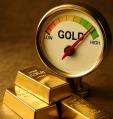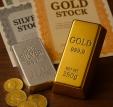The Trouble with Paper Money
IS their a problem with the dollar ? After falling to $1.30 against the euro representing a decline of 20% since the beginning of 2003. In trade-weighted terms, the dollar fell less over the same period (15%), but mainly because Asian central banks have been intervening heavily to stem their currencies' rise against it. However lately it has been showing a great deal of strength. It is being argued that America needs a weaker dollar to correct its $800Billion trade deficit. But given the dollar's role as a reserve currency and given the fact that even during it's period of extreme weakness the trade deficits continued to expand rapidly.
Money in its present form is a relatively new invention. For most of human history money meant either gold or silver, either directly, or indirectly by means of the "gold standard" which meant, at least in theory, that all paper money was backed by gold. Enthusiasm for the gold standard evaporated in the 1930s, when it was falsely blamed for making dreadful conditions worse.
A simulated Gold standard was later adopted in a watered-down version after the second world war, when only the dollar was backed by gold. This arrangement made some sense, since America held three-quarters of the world's gold stock. But it came to an end in 1971, when the accumulated pressures of socialist government policy in America caused the country's manufacturers to become uncompetitive, the dollar was crashing and many in Europe began to refuse to accept it and their central banks, especially France's, began cashing in Dollars for Gold and forced the country off the gold standard. Since then the world has relied on "fiat money", so-called because it is created by government fiat and is backed only by the promises of central bankers to protect the value of their currencies. It is the value of those promises that some are now questioning.
Promises, promises
Certainly, all those promises of various countries have been suspect in recent years. In the early years of fiat money, inflation took off, especially in America, in part because of the two oil shocks of the 1970s. This debased the value of the dollar, and the price of gold climbed from $35 an ounce to $850.
It was only in late 1979, in his famous "Saturday night special", that Paul Volcker, then chairman of the Federal Reserve, raised interest rates sharply to clamp down on inflation and strengthen the Dollar. The gold price subsequently fell sharply and in its place came a bull market in government bonds that has, with a few sharp interruptions, continued to this day. Although central banks around the world still hold about 30,000 tones of gold in their reserves, many have been offloading their stocks of gold over the years. They can earn only a nugatory rate of interest on these stocks (by lending them out) compared with what they can earn on government bonds. For most people, gold has been relegated to the status, in the words of Keynes, of a "barbarous relic"; its price rising only feebly when investors have fretted about inflation.
Those who doubt the continued worth of paper money as a store of value point to two things. The first is that the price of gold has been rising even though official inflation is low. From $251 an ounce in the late 1999s, gold now fetches just over $460 an ounce. It is not just the price of gold that has been rising: so, too, have the prices of the other precious and base metals, with copper hitting all time record highs.. There may, of course, be many other reasons for these rises. China's rapidly expanding economy is gobbling up metals and other commodities for its ever expanding and newly created cities. Moreover, the rise of late has been against all currencies not just the $. But the rise in the price of gold in particular has raised questions. The biggest of these-and the second main reason for concern-is the amount of debt that rich-country governments have been running up. America's official budget deficit has surged in the five years since George Bush became president, to around $600 billion and climbing, and with Katrina Rita and Wilma we can only guess what will be the shortfall this year.
The government's total future liabilities are much larger. The present value of the American government's future obligations, taking into account promised pensions and health-care benefits, is a staggering $45 trillion plus. European governments are only slightly better at managing their budgets-witness the breaching of the single currency's growth and stability pact.
Japan's attempts to coax its economy back to life have left it with a gross national debt of some 160% of GDP, the highest of any Industrialized country. No country has tried harder to debase its currency. In theory, such debts would not be tolerated for long by investors, since the easy way out for central banks is to "monetize" them with inflation. Bond prices would fall (and thus yields rise) as investors worried that they would be paid back in a debased currency. But capital markets currently seem oblivious to spiraling debts. At some 4.5%, yields on ten-year American Treasury bonds are close to their lowest in two generations, although this is partly explained by huge purchases by Asian central banks. Yields elsewhere are also very low, nowhere more so than in Japan, where ten-year government-bond yields are now 1.3%. The problem may be that bond investors, far from being far-sighted, are in fact myopic, and are perhaps being fooled by the temporary dis-inflationary effects of excess capacity and debts built up over the bubble years in both Japan and America. Perhaps, too, investors have been lulled into a false sense of security by the performance of central banks in recent years, and the independence that has been granted to many of them by governments. But this very aura of inviolability may be storing up problems, since it means that governments can borrow still more at cheap rates.
However, with interest beginning to creep up (up 60 basis points on the 10 year in the last 30 days) governments will soon find themselves crushed by debt and you can rest assured that this independence will be taken away. And then, once again, the paper in your pocket will only be as good as a politician's promise.
Aubie Baltin CFA, CTA, CFP, Phd. (retired)
Palm Beach Gardens, FL
[email protected]
561-840-9767
8 November 2005

















